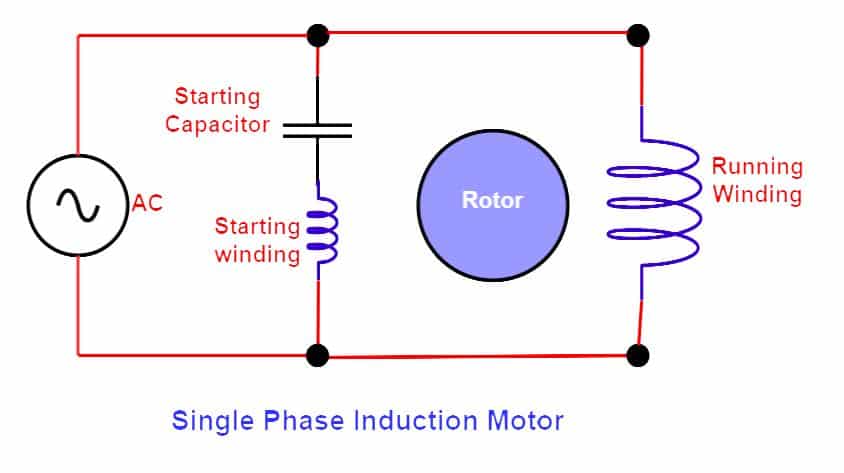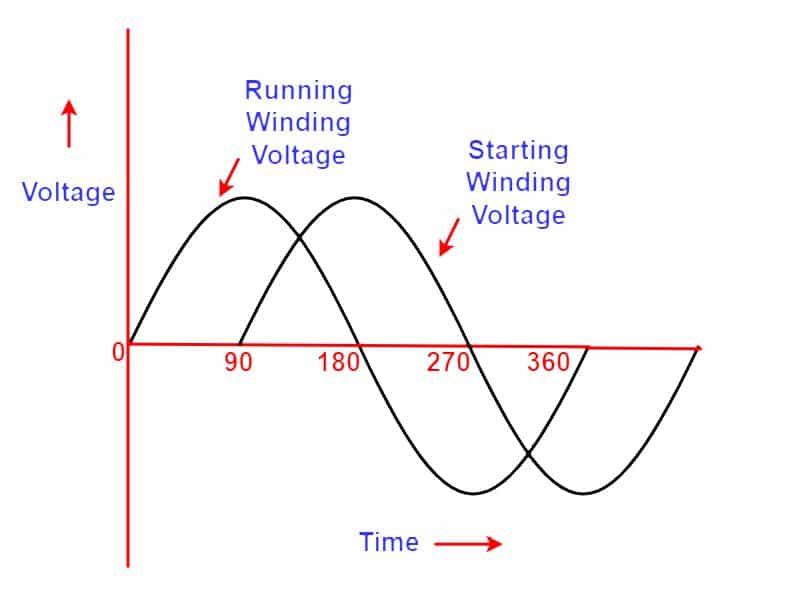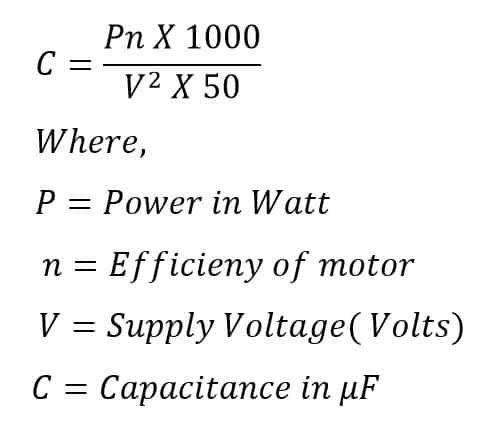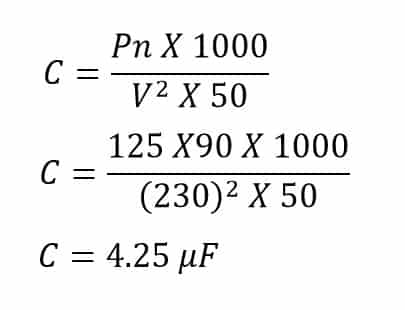A single phase induction motor needs a capacitor in its circuit at the starting time to produce the starting torque. Without a capacitor, a single-phase capacitor start induction motor can not run. The other single-phase induction motors, such as shaded pole and reluctant type do not require capacitor for their starting. In this article, we will discuss how the capacitor helps in producing the starting torque in a capacitor start single-phase motor.
Single Phase Motor is not Self-starting
The single-phase motor is not a self-starting motor. The motor can rotate if it generates a rotating torque. The rotating torque generation happens when the motor generates a rotating magnetic field. Principally, a three-phase induction motor is capable to generates a rotating magnetic field. Contrary to this, the single-phase motor is not capable to generate a rotating magnetic field and can’t start its own. The single-phase motor generates a revolving field and can not produce the rotating torque.
How to Produce Rotating Torque in a Single-Phase Motor?
The shaft of a single-phase motor if once rotated manually after switching on its power supply can generate the torque and the motor starts rotating continuously. However, at every start of the motor, the manual kick on the shaft is a must for motor rotation.
A split-phase method splits the phase supply. Thus, this split of phases creates the phase displacement between the two phases is 90 electrical degrees. in space. To achieve phase displacement of 90 degrees, the two windings are in 90 degrees in space physically.
The capacitor used in the series with the other auxiliary winding mainly provides this 90 degrees of phase displacement. The auxiliary winding is also called the starting winding because it helps in starting the motor when we connect it in the series with the capacitor. The following diagram shows the starting and the running winding of the single-phase motor.

The starting and running winding voltage have 90 degrees of phase displacement. The following diagram shows phase displacement between these two winding.

Capacitor Value Calculation for Single-phase Motor
The value of the capacitance for a single-phase induction motor is proportional to the power rating of the motor. The formula to calculate capacitor sizing is as follows.

Example
Calculate the capacitance value for a single-phase induction motor. The induction motor data are- Power 125 Watts, supply voltage 230 V,50 Hz, and efficiency of 90%.

Note that capacitor voltage rating must be 440 volts for a 230 volts power supply of a single-phase induction motor.
The following table shows the capacitance value for different power rating single-phase( 230 volts) motors,
| Power Rating of motor(Watt) | Capacitor Value(μF) | Capacitor Voltage Rating(V) |
| 90 | 2.5 | 440 |
| 125 | 4.5 | 440 |
| 185 | 6.0 | 440 |
| 250 | 8.0 | 440 |
| 370 | 12.0 | 440 |
| 550 | 16.0 | 440 |
| 735 | 20 | 440 |
i’ ve learnt abit on
Detailed information. Simple language and reach to layman like me. I like it.
Simple but Nice. As Albert Einstein ever said: “If you can not explain it simply, you don’t understand it very well.”
I have a 230v, 38amp, 86.9% eff motor, Using the formula above I get,
8740 x 0.869 x 1000 / 230^2 x 50 = 7,595,060 / 2,645,000 = 2.87uF.
The motor has a 100uf capacitor, what am I missing?
Lamont
put the value of efficiency 86.9 in place of 0.869.